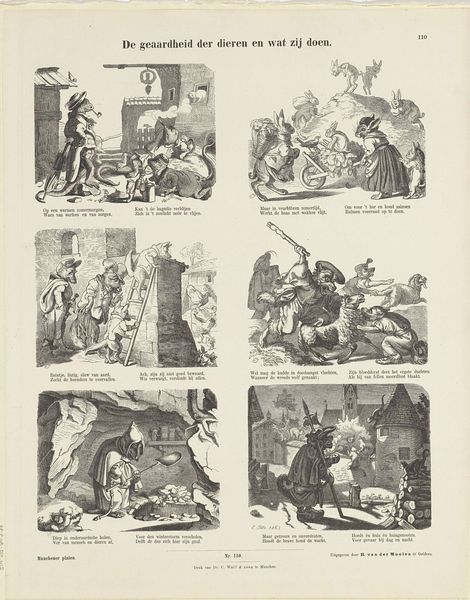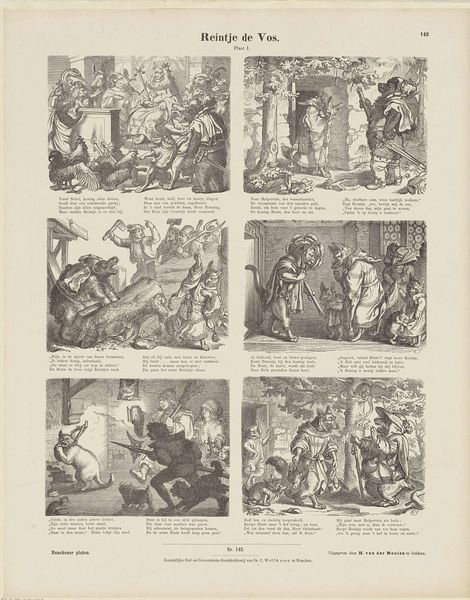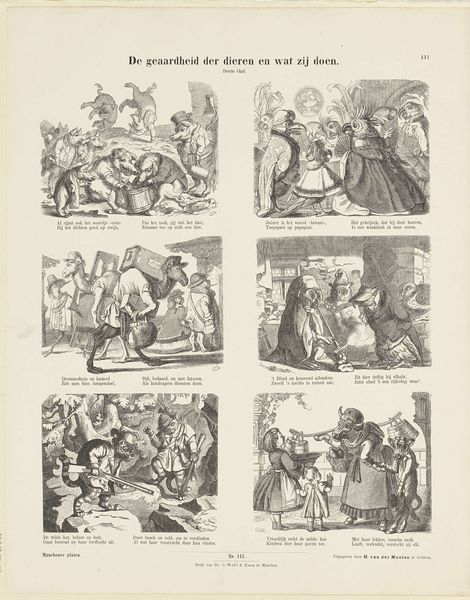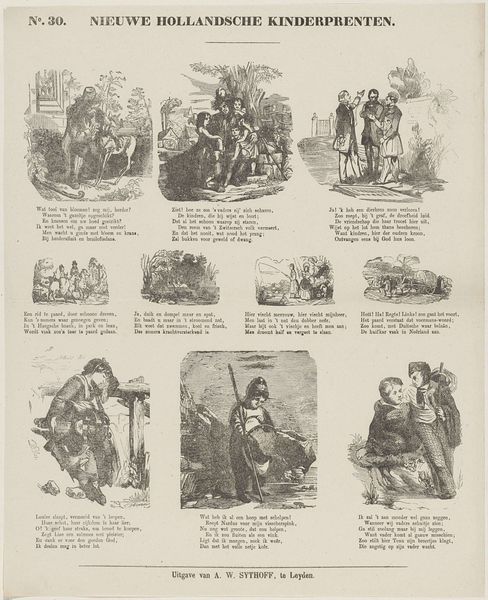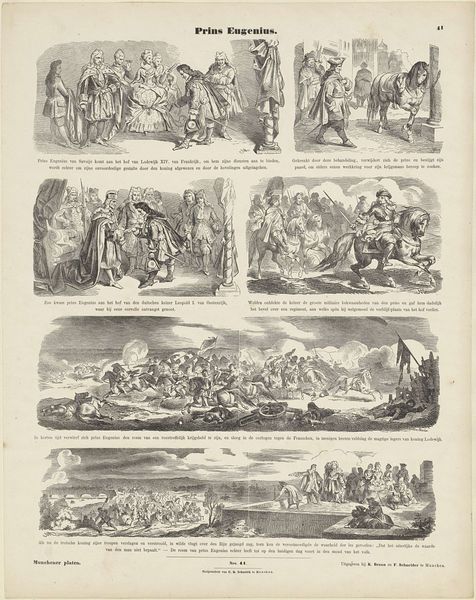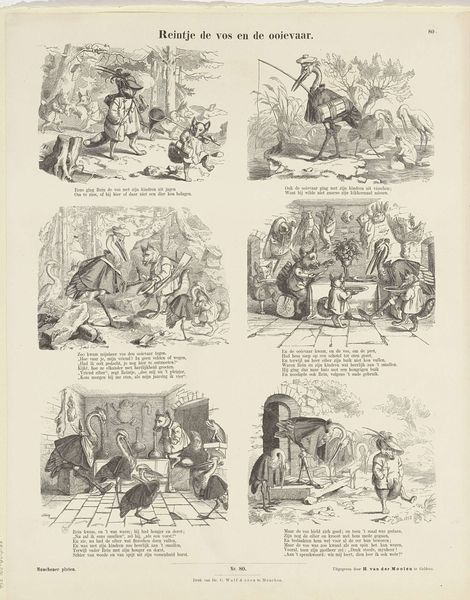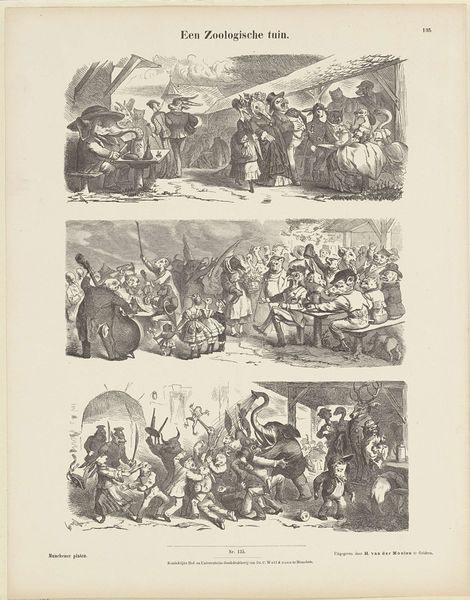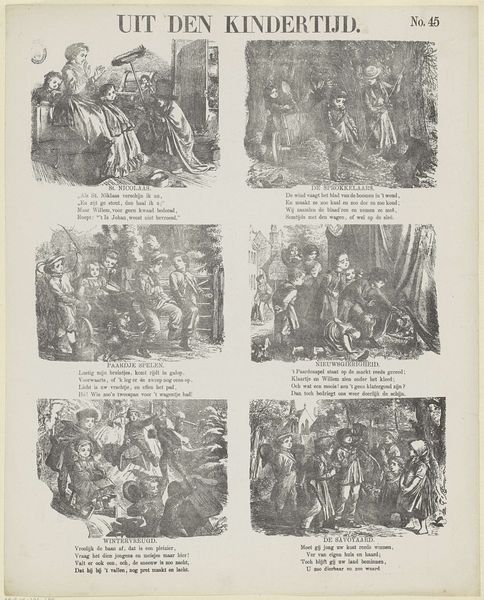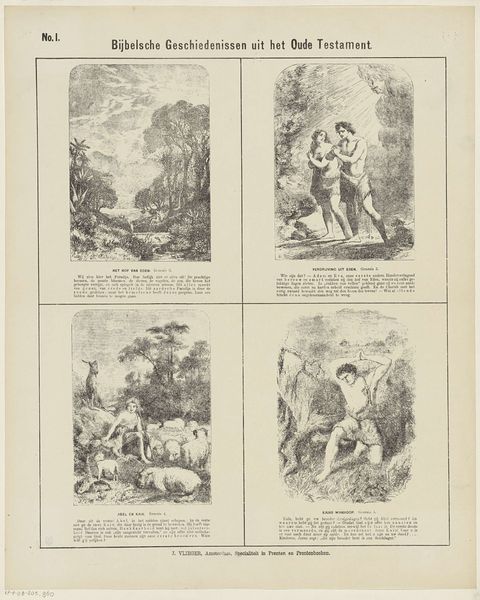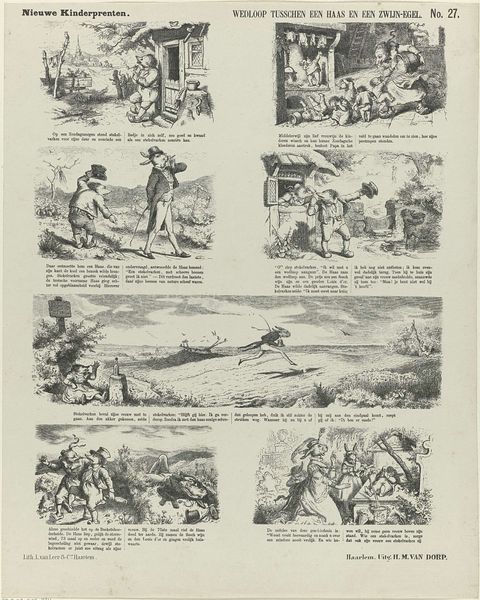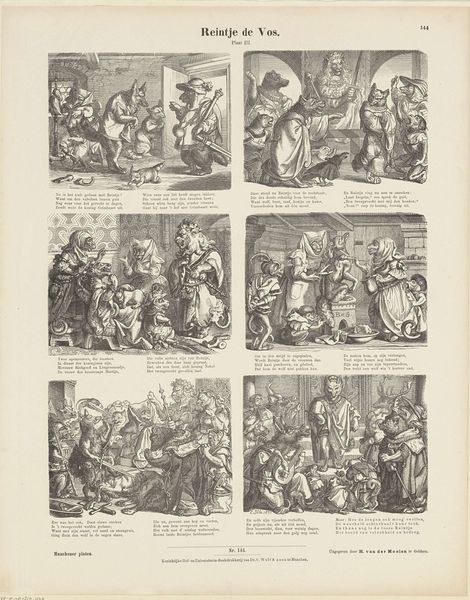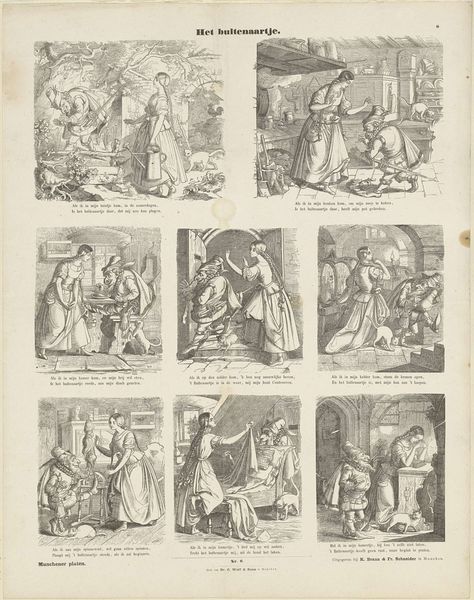
print, engraving
#
narrative-art
# print
#
caricature
#
old engraving style
#
comic
#
genre-painting
#
engraving
Dimensions: height 442 mm, width 345 mm
Copyright: Rijks Museum: Open Domain
E. Ille's undated print, "De geaardheid der dieren en wat zij doen," presents a series of anthropomorphic animal scenes, likely produced as an inexpensive print for mass consumption. These images, common in 19th-century Europe, often served as satirical mirrors reflecting human society. By imbuing animals with human characteristics, artists could critique social classes, political figures, or cultural trends. Here, we see frogs in formal attire, insects engaged in courtship, and birds mimicking human professions. The humor lies in the absurdity of these scenarios, but also in their potential to expose the follies and hypocrisies of human behavior. The location of the printing press in Munich suggests a German or Dutch cultural context, where such satirical prints were popular forms of social commentary. To fully understand the print’s meaning, we might consult periodicals and popular literature from the time, seeking to decode the specific cultural references and political allusions embedded within these seemingly innocent animal scenes. The history of printmaking, as a form of mass media, tells us a lot about the social function of art.
Comments
No comments
Be the first to comment and join the conversation on the ultimate creative platform.
